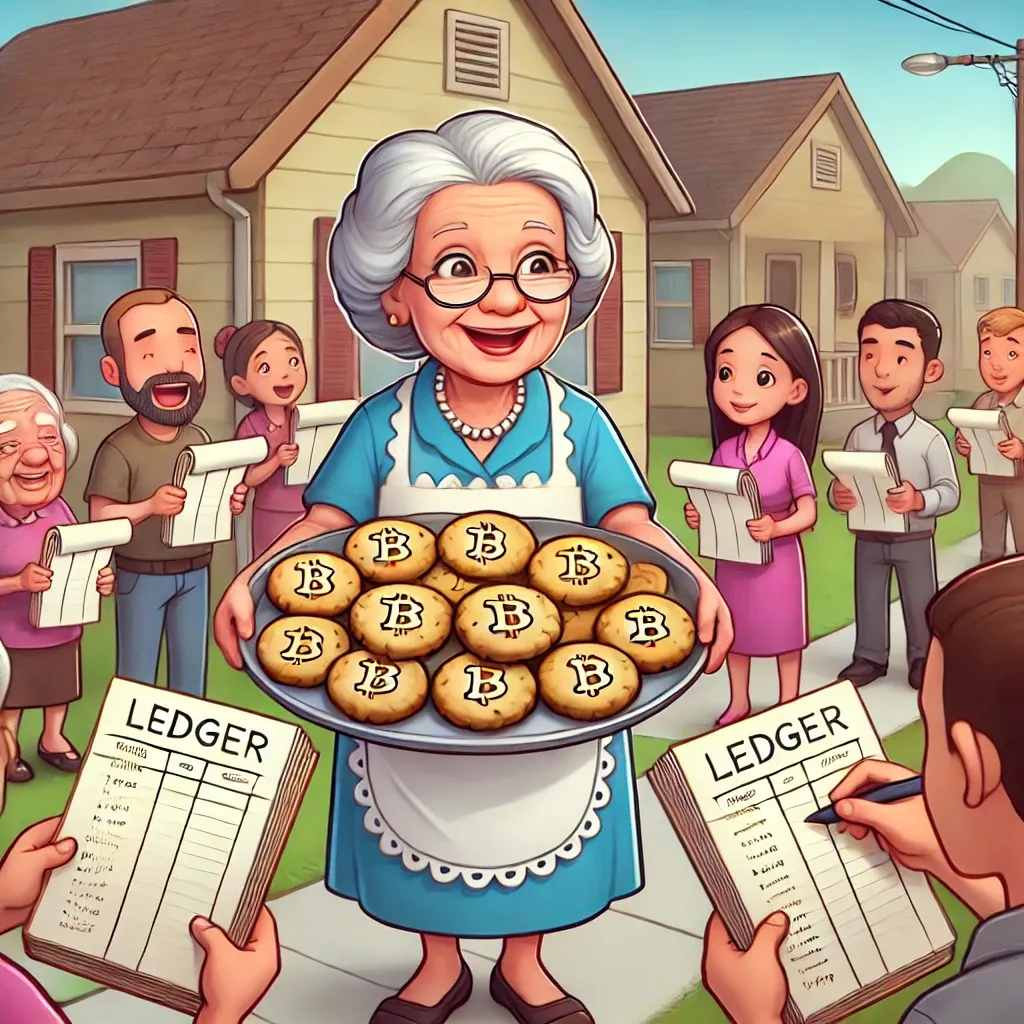Let’s face it: explaining blockchain to anyone who isn’t a tech enthusiast is like trying to describe quantum physics while juggling flaming swords. So, when my grandma asked, “What is this blockchain thing everyone’s talking about?” I knew I had a challenge on my hands. Spoiler alert: She understood it—and even cracked a joke about Bitcoin.
Here’s how I broke it down.
Setting the Scene: Cookies and Gossip
The first rule of explaining blockchain to grandma: Relate it to something familiar. In our case, cookies and gossip.
I started by saying, “Grandma, imagine you baked a fresh batch of cookies. You want to share them with your friends, but instead of handing them out yourself, you ask everyone in the neighborhood to keep track of who gets a cookie.”
Her eyebrows raised. “So everyone knows my cookie business? That’s a bit nosy.”
“Exactly! But here’s the kicker: Nobody can lie about the cookies because everyone has a copy of the cookie ledger.”
“A cookie ledger?” she asked, giggling.
“Yes, it’s like everyone keeping a notebook where they write down who got which cookie, and they all compare notes to make sure no one cheats.”
This was the first aha moment.
Step 2: Digital Cookies and Blocks
Next, I shifted gears.
“Now imagine the cookies are digital. Each time you give one away, the transaction gets written into a block. When the block fills up with cookie transactions, it’s locked up and added to a chain of previous blocks. This chain is called the blockchain.”
Grandma nodded. “Like a scrapbook of cookie transactions?”
“Exactly! But here’s the fun part: Once something is added to the scrapbook, it can’t be erased. It’s permanent.”
She leaned in. “So nobody can pretend they didn’t get a cookie?”
“You got it, Grandma!”
Step 3: The Blockchain Neighborhood Watch
By now, she was intrigued. But I needed to clarify one more thing: the decentralized nature of blockchain.
“Remember how everyone in the neighborhood keeps a ledger?”
She nodded.
“This means there’s no boss of the cookies. Nobody owns the ledger, and everyone works together to make sure it’s accurate. If someone tries to lie about getting extra cookies, everyone else will spot the inconsistency and reject it.”
Her eyes lit up. “So it’s like a neighborhood watch group for cookies?”
“Exactly! And this is what makes blockchain so secure. It’s almost impossible to cheat.”
Grandma’s First Blockchain Joke
After my explanation, I paused to let her absorb it. Then she said, “So Bitcoin is like trading cookies?”
“Kind of,” I replied. “But instead of cookies, it’s digital money.”
She laughed. “Well, I hope nobody eats my Bitcoin cookies!”
Why This Explanation Works
-
Familiar Analogies: Everyone loves cookies (or at least understands them). Using simple, relatable examples makes complex ideas digestible.
-
Storytelling: Turning blockchain into a neighborhood gossip session adds humor and keeps the listener engaged.
-
Step-by-Step Breakdown: Introducing one concept at a time ensures clarity without overwhelming the listener.
The Takeaway
Explaining blockchain doesn’t have to be boring or confusing. By using humor and relatable scenarios, you can make even the most complex topics accessible. My grandma now proudly tells her friends about her “blockchain cookies” and how “they’re safer than the bank”—proof that the right analogy can work wonders.
So next time someone asks you about blockchain, grab some cookies, brew some tea, and prepare to entertain. Who knows? You might just create a blockchain evangelist in the process.
